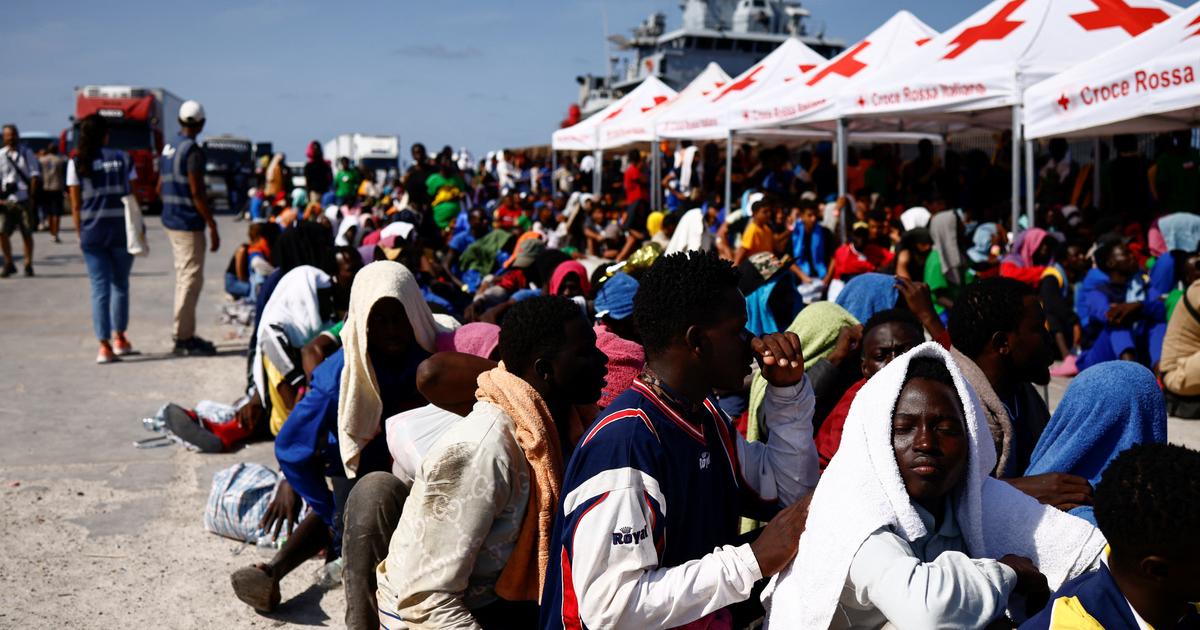Since the beginning of 2023, Europe has been experiencing a migratory wave that promises to be historic. At the beginning of the week, 7000,24 migrants arrived in less than 2010 hours on the Italian island of Lampedusa whose authorities immediately declared a state of emergency. Italy has been calling for a reform of the Dublin Regulation for many years, overtaken by flows that have intensified since the early <>s. Why have successive attempts at reform never succeeded? Why are member countries struggling to reach an agreement? Le Figaro takes stock.
- What is the status of the new immigration pact studied by the European Union?
After her election as President of the European Commission in December 2019, Ursula von der Leyen promised to "abolish" the Dublin Regulation and "replace it with a new European system of migration governance". Three years later, the new pact, which has been discussed for several years, is still under negotiation. EU interior ministers reached an agreement last June. This agreement paves the way for talks with the European Parliament with a view to adopting the reform before the European elections in June 2024.
- What does this "migration package" contain?
It tries to respond to the pressure exerted on Member States, which are again facing sharply rising asylum applications (+52% in 2022). In principle, it intends to strengthen the tightness of borders with regard to migrants who are not eligible for asylum, while allowing European solidarity in the sharing of refugees, in order to relieve the countries "on the front line" (Cyprus, Spain, Greece, Italy, Malta... and to a lesser extent the France).
This reform proposes centralised management of the distribution of asylum seekers, who will be relocated on a compulsory basis to the different Member States. This "obligation" having been the subject of lively discussions between the Ministers of the Interior, it has been replaced by a financial sanction provided for against recalcitrant Member States: they will have to pay a financial contribution of 20,000 € for each migrant they refuse to welcome.
" READ ALSO Immigration: how do others do? The European tour of the most effective policies
The reform also provides for a "screening regulation" to ensure more efficient screening of migrants arriving illegally at EU borders, as well as a simplification of the procedure to redirect rejected asylum seekers outside the EU more quickly.
- How is it received by EU member states?
While Giorgia Meloni's Italy applauds with both hands a reform she has been calling for for a long time, Hungary and Poland voted against. Polish Prime Minister Mateusz Morawiecki even announced in August that a referendum would be held on this new European policy for welcoming migrants. The fine of 20,000 euros will "not be accepted by citizens", the minister also warned in June, recalling that Poland had already welcomed the largest contingent of Ukrainian refugees since the beginning of the Russo-Ukrainian war.
In addition to these two countries, Bulgaria, Malta, Lithuania and Slovakia abstained. Not enough to constitute a blocking majority, however. As the examination of asylum and immigration texts follows an ordinary legislative procedure, unanimity of the Member States is not required in the Council. Parliament, for its part, has already had the opportunity to express its overwhelming support for the reform.
- Why were the Dublin agreements no longer enough?
This system of distribution of migrants between EU countries, which dates back to 2013 in its third version, stipulated that all asylum seekers had to lodge their application in the first country where they entered and where they were registered. It is up to this country to process his file and expel him if his application is rejected.
But since the explosion of migratory flows in 2015, this system has shown its limits. The number of first-time applicants in Europe has risen from 563,000 in 2014 to nearly 1.3 million in 2015 and the pressure has become too great. The countries concerned by the arrival of migrants were no longer willing - and could no longer - assume the reception and registration of all newly arrived migrants.
- Why haven't the reforms worked so far?
To remedy the problem, a distribution mechanism has been devised, based on the principle that reception capacity must depend to some extent on the demographic and economic weight of the country. A first reform was thus attempted following the migratory wave of 2015, by including a corrective mechanism to force countries depending for example on its GDP country to receive migrants.
" READ ALSO Immigration: asylum applications explode in France and Europe
A second attempt of the same kind, named Dublin IV, was set up, but, like the first, failed. At issue: the disagreement of the countries of the Union with on the one hand the countries in the front line such as Italy, which considered these reforms insufficient. Italy demanded permanent quotas and especially reception centers for migrants on the other side of the Mediterranean to no longer be presented with the fait accompli of massive crossings. On the other hand, the countries of the Visegrad Group (Hungary, Poland, Czech Republic, Slovakia) have always ostensibly rejected any principle of solidarity in favour of the principle of responsibility specific to the initial Dublin agreement.

